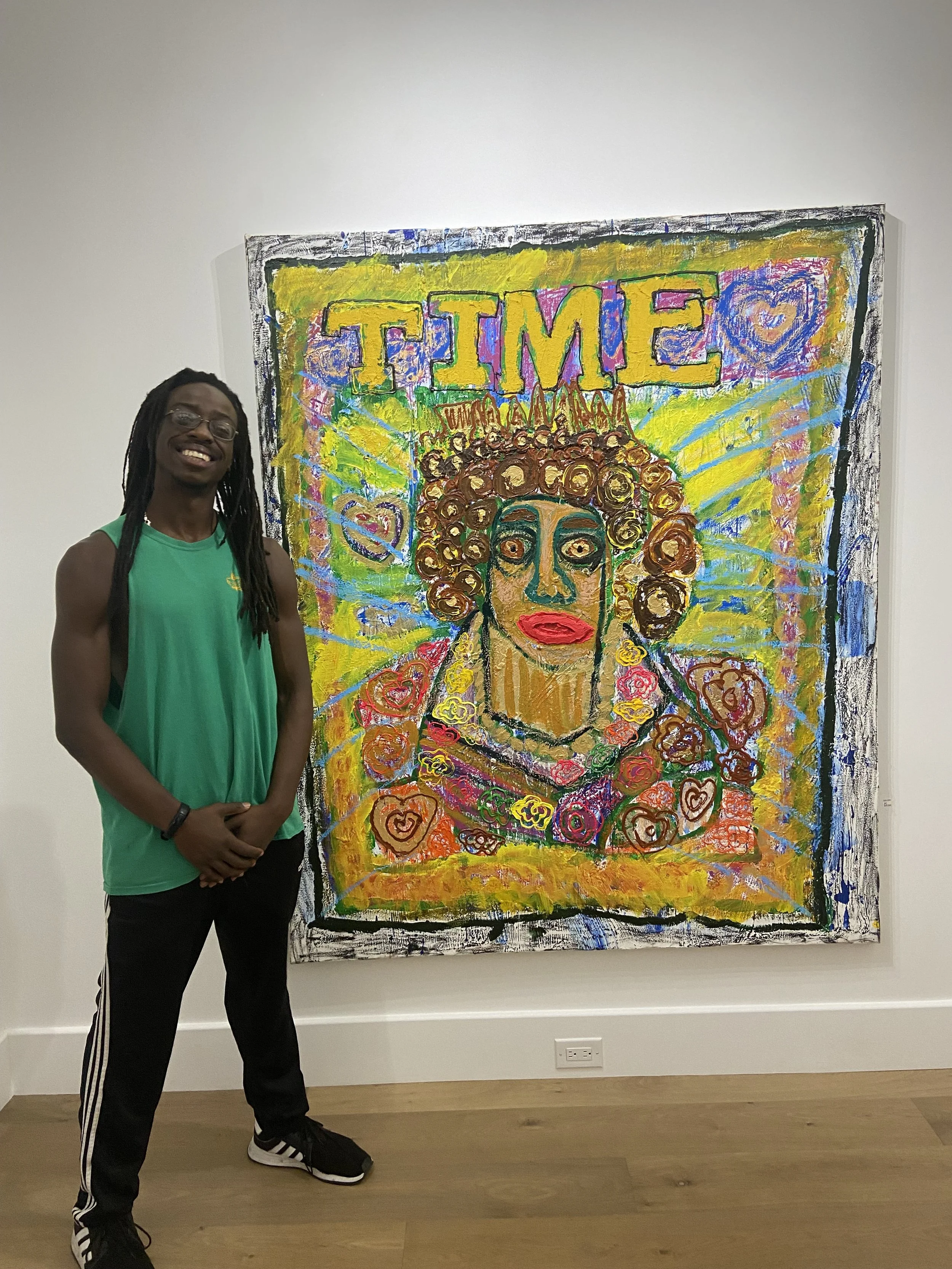CULTURE SHARE: The Grenchus Foundation @ Yang Si Young - Kate Oh Gallery
The Grenchus Foundation @ Yang Si Young - Kate Oh Gallery
Exhibit and Reception
Yang Si Young. An artist who paints from the heart
Yang Si Young is considered a profound artistic phenomenon in the Republic of Korea. His youthful manner of work, his performative ethos, and his superlative honesty give his followers a clear understanding of his persuasive temperament. Yang is a deeply creative and symbolic force who orchestrates a distinct and miraculous presence. Many viewers have alluded to Yang’s beguiling mind as a fundamental source of love. He engages in an endearing life-style that alludes to heightened expressions of pleasure often in relation to the animals he embraces and to the natural world he adores.
Born in 1999, Yang was diagnosed with autism at the age of five. Despite the developmental disabilities that followed, there was evidence to suggest that Yang was drawing and painting in top form well before learning to speak. Now in his early twenties, the artist has been honored with participation in numerous high-end exhibitions both in his own country as well as internationally. These include the Seoul Museum of Art, the Art Students League in New York City, and the BIAF international art fair where he was chosen as a delegate from South Korea. In the meantime, Yang has received considerable attention from the media as an artist who represents his generation’s neo-pop, pictorial playfulness in contrast to the qualitative standards of the abstract painters that preceded him.
In addition, much has been said by Korean critics, specifically Jang Jun – Seok, regarding Yang’s interest in the “multidimensionality of life as a matter of innocence.“ Undoubtedly this concept borrows more from the so-called virtual realm than it does from tactility, which of course would be expected from Yang’s generation. The curious affect here is interesting. Yang has been slated as an artist who performs “heartism,” which is defined as “a frankly expressed heart of love without pretense.” The mixture between the virtual domain and the domain of love opens a premise somewhat puzzling to discern. Given the artist’s arbitrary, omnipresent role of touch, we might ask: What exactly does this mean? For Yang, It would appear that touch would extend beyond the purely physical into the realm of feeling, wherein one is most likely to discover love.
Words cannot fully account as one looks closely at the exuberant color in these charming works by Yang Si Young. Titled New York Sisters #1 and #2, viewers will notice four anonymous women poised in each of the two paintings. According to the artist. their images were initially discovered on subway billboards. When it came to painting them, Yang’s choice of material was mixed media that undoubtedly transformed their appearances. Even so, what mattered to Yang was the intrigue of form and color painted in a style suggesting a child-like realism that favored a sense of interior feeling. Perhaps this was how he felt the sisters should appear, rather than according to their actual demeanor. As a result, a kind of delight is given to these women, a delight that does not easily disappear.
There are many paintings in this series, all painted in a similar style, and all of these women are seen from the perspective of the artist’s romantic consciousness. As a result, the paintings ultimately reveal a similar appearance in which the informal use of line, color, and shape would seem to be the issue. Most of the paintings measure 48 x 60 inches and are on canvas. A few smaller ones measure 28 x 35 inches. Here I would include Yang’s brilliant Thinking Woman (2022) whose intimate contemplation fills the entire pictorial space.
In terms of the larger medium-sized canvases (48 x 60”), I am particularly moved by Queen, Blue Eyed Woman, Wedding, and Fresh. Each of these paintings has it own character, its own presence, and its own narrative. Each of them was painted in the year 2022. Yet, at the same time, the artist took the subject matter in each painting to a new level. While they are stylistically similar, including the mixed-media materials, the manner of address in each painting is different.
Each painting tells its own story. For example, in Blue Eyed Woman, the protagonist wears a large necklace that brings attention to her eyes. In Queen, the painting is covered with rhythmic polka dots throughout the surface, whether on the gown or the space around her. In Wedding, the women show a clear sense of intimacy with one another. Finally, the painting titled Fresh is possibly the most curious. According to the artist, “The models who were on the fancy billboards of every Manhattan street were fantastic.” It is interesting that the artist’s source materials come from photographic layouts, rather than real people he has seen and spoken with.
The paintings of Yang Si Young are filled with mysteries that focus on everyday life that he has chosen to paint in highly articulate ways. At the same time, there is an aura of sophistication in terms of his painterly technique. He has nurtured a style of his own that resonates with happiness and delight that moves audiences to see and think differently about how we, as human beings, come to know one another better through art.
About the Critic
Robert C. Morgan is a writer, artist, critic, art historian, curator, and educator. Knowledgeable in the history and aesthetics of both Western and Asian art, Morgan has lectured widely, written hundreds of critical essays (translated into twenty languages), published monographs and books, and curated numerous exhibitions.



























































































